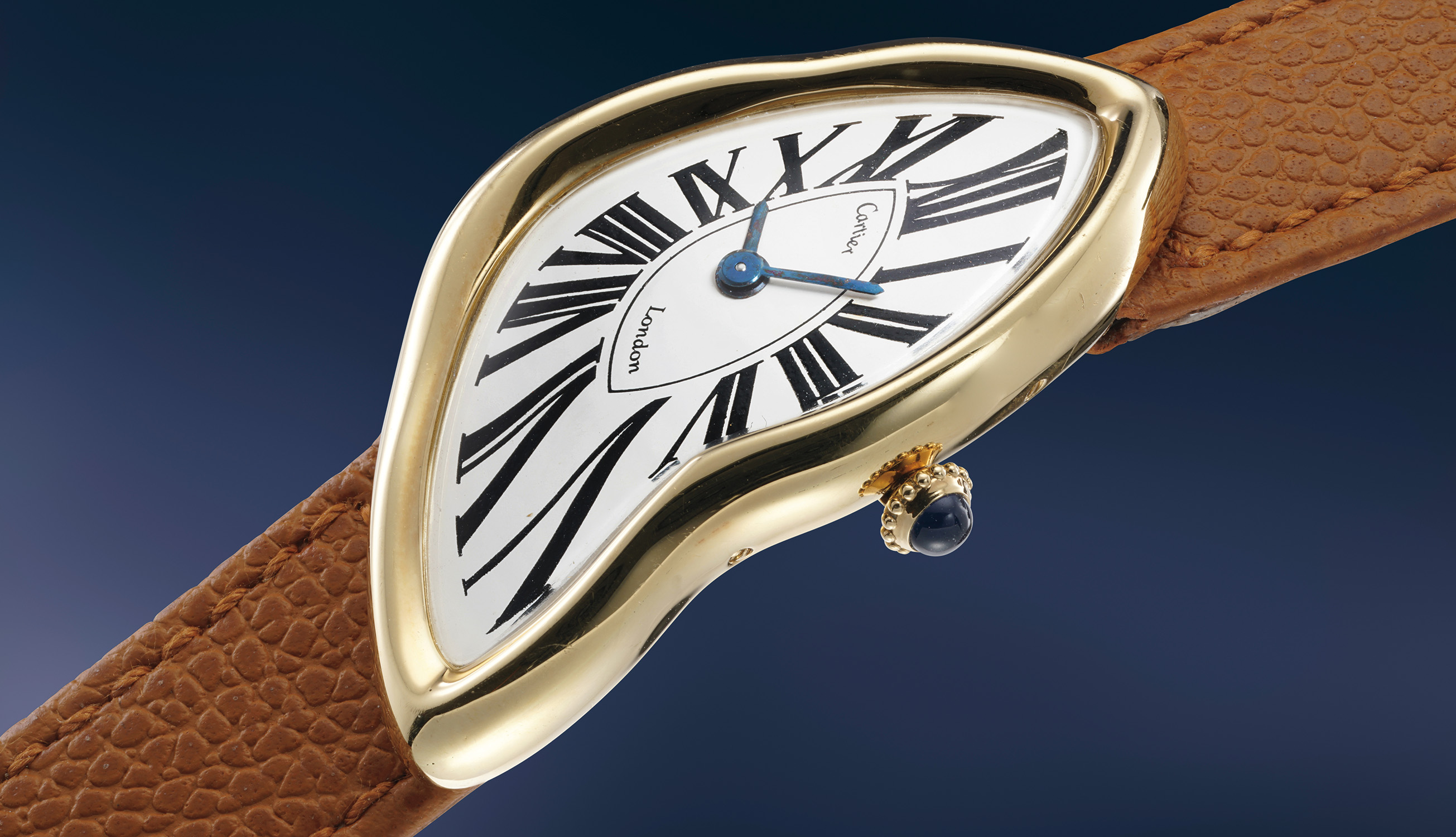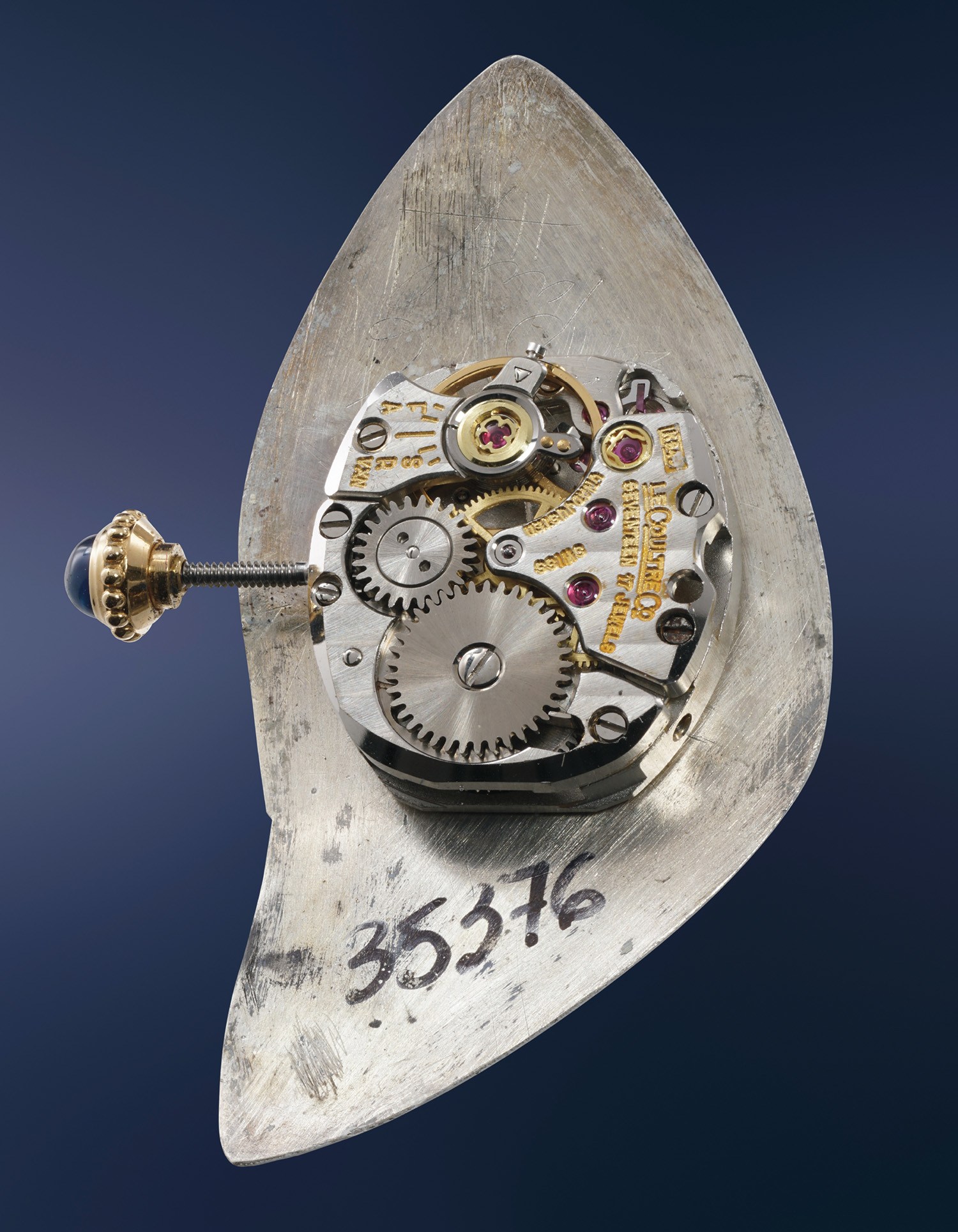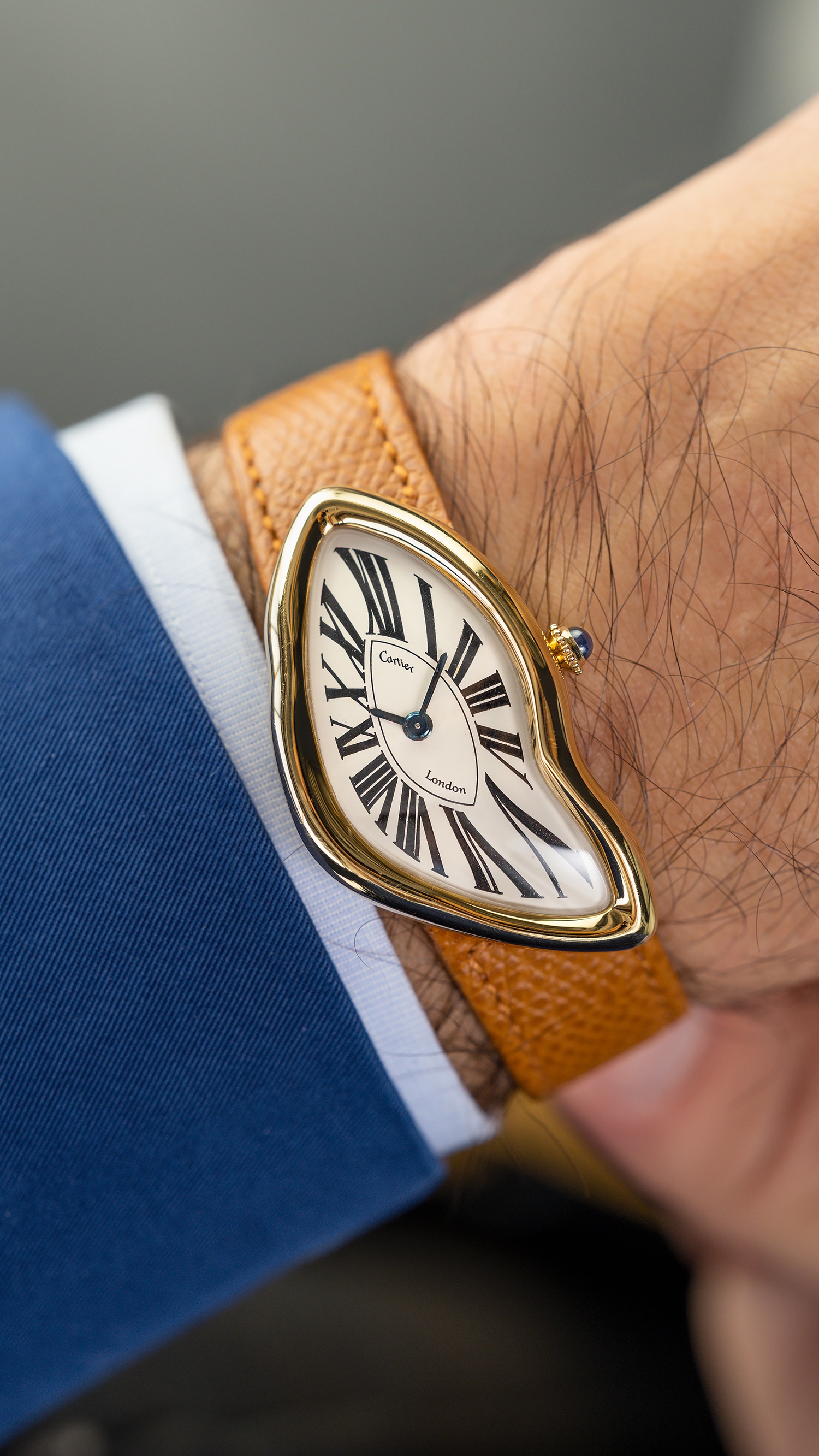























9Σ✱
Cartier
“Crash London”
An extremely rare, historically important, and early yellow gold asymmetric wristwatch with presentation box, offered by the family of the original owner
Full-Cataloguing
Some believe incorrectly the melted timepieces in Salvador Dali’s most recognizable work, the “Persistence of Memory”, inspired its fluid shape. A more widely rumoured, yet incorrect story involved a Cartier executive injured in a car accident. Their Maxi Bagnoire Alongée melted from the fire that ensued, transforming its shape. He or she brought the watch to Cartier London for repair, and it was this watch that served as the model’s inspiration.
Today, Francesca Cartier Brickell confirms in her revealing book, “The Cartiers: The Untold Story of the Family Behind the Jewelry Empire”, the design was the brainchild of her grandfather Jean-Jacques Cartier and designer Rupert Emmerson. The original Crash was released in 1967 by Cartier London and since then, very limited batches of the famed design were released throughout the decades until the present day. At the time Jean-Jacques Cartier was the head of Cartier London, and along with Emmerson, they modified a Maxi Bagnoire Alongée to make it look as if the watch had been in a crash.
The present watch is part of a very limited number of examples produced by Cartier London beginning in 1967, featuring London hallmarks on the case back interior, and its original Cartier deployant buckle with similar London hallmarks also dating it to 1970 – both further stamped ‘JC’ for Jean-Jacques Cartier. A possibly unique and unusual aspect of this particular example is the “Swiss Movement” engraved to the case back. Not seen on other examples, it adds to the allure and mystery of the model.
The Crash perfectly embodies the unconventional and swinging decade of the 1960s with an unmistakably unique look, which today is one of Cartier’s most iconic and cherished timepieces. Cartier London Crash watches are exceptional for their masculine size, measuring an impressive 43 mm long by 25 mm wide. The vast majority of subsequent Crash watches, particularly those signed Cartier Paris, have smaller cases measuring 38 mm long.
This Cartier Crash is offered for the first time ever by a descendant of the original owner, Daphne Farago. Along with her husband Peter, she was an esteemed art collector and recognized philanthropist with an intelligent eye for American folk art and furniture, contemporary crafted objects, and jewellery. Her passion and unique collecting approach was widely admired and in 2017 Art News Magazine named her as one of the top 100 collectors in the world. The Crash is an embodiment of her collecting style. She was ahead of her time, seeking artists and artisans whose work displayed an authentic and unique style. She regarded jewellery in the same way, and saw these items as a form of public art to be worn and enjoyed.
Over her lifetime, Daphne Farago created a collection of important wearable works of art ranging from the 1940s to the 2000s, which in its entirety, is a study in the history of American studio jewellery. Her eye was captivating, and the unique form of the Cartier Crash is seen in other works in her collection with bold, fluid shapes and designs. She had a sense of connection to her jewellery and sought pieces that were not only exceptionally crafted, but provided her joy. From the beginning, Daphne Farago wanted to create a collection that would one day provide a museum with a comprehensive collection, thus she educated herself, sought advice from experts, and today her extraordinary collection is one of the jewels of the Museum of Fine Arts, Boston. Her passion and keen eye for wearable works of art is exemplified by the Cartier Crash, and the brand’s commitment to outstanding design.
The elusive London Crash watch, with its amazing, dream-like curved form, is certainly Cartier’s most radical wristwatch design, while at the same time ranking amongst the most iconic collectors’ watches ever produced by any brand. For passionate enthusiasts and collectors, an original Cartier Crash timepiece is the pinnacle of wristwatch collecting. Well-preserved in outstanding condition with a sharp case and stunning original dial, this watch is a wonderful example for the elite collector. Hardly ever seen at auction, this breath-taking watch is a rare opportunity to acquire such an important and iconic timepiece.
CONSIGNED BY THE FAMILY OF THE ORIGINAL OWNER
Cartier
FrenchWith the Constitution of 1848 came a new standard for luxury in France. Founded one year prior by Louis-Francois Cartier, the house of Cartier was one of the first to use platinum in jewelry making. This incredibly expensive material became the stepping-stone for Cartier to experiment in form, mechanisms and attitude. It helped men move from pocket watches to wristwatches, effectively making the watch much more functional and prominent in a man's overall wardrobe.
Cartier did not only touch on functionality. Inspired by a commissioned painting by George Barbier featuring a black panther at the feet of an elegantly bejeweled woman, Cartier began incorporating wild animals in his designs—most notably, Cartier Panthère rings, bangle bracelets and watches. Yet it wasn't until the late 1960s that the house of Cartier debuted their iconic yellow and rose gold LOVE collection, which includes the famous bracelet that only a special screwdriver can open.